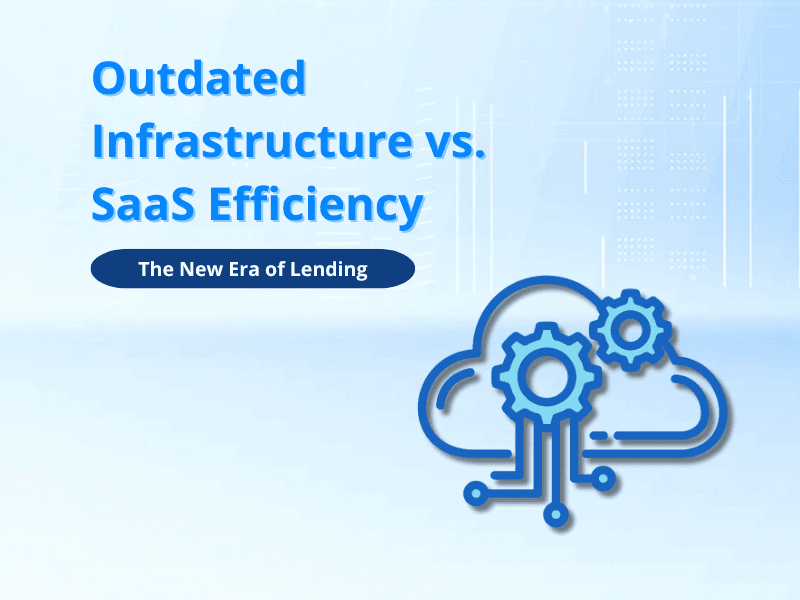Imagine tending to a backyard greenhouse that provides fresh vegetables whenever needed, versus making weekly trips to the market for your supply. Both methods have their benefits and drawbacks. Similarly, financial institutions face a critical decision: should they embrace a subscription model like Software as a Service (SaaS) or stick with self-built on-site premises for their operations? Each option has its own set of advantages and challenges, making it essential for financial institutions to weigh their choices carefully. SaaS, a cloud-based service model, provides financial institutions with access to a variety of banking services and functionalities via the Internet from third-party providers.
The benefits of SaaS
Cost-effectiveness and flexibility
Financial institutions are always looking for ways to save money, and SaaS is a cost-effective alternative to traditional on-site premises. It eliminates the need for expensive hardware, ongoing maintenance fees, and operational costs associated with managing physical infrastructure. This shift simplifies financial processes and boosts flexibility and scalability, allowing financial institutions to swiftly respond to market changes and technological advancements without the hefty costs of traditional infrastructure management.
Expertise and Resources
SaaS allows financial institutions to tap into the expertise and skills of third-party providers, significantly reducing the burden of internal IT management and infrastructure maintenance. This delegation frees up valuable resources, enabling financial institutions to focus on their core business operations and drive innovation. Outsourcing technical tasks to specialist providers lets financial institutions concentrate on enhancing services, developing new products, and staying competitive in a fast-paced market.
Agility and Scalability
Cloud-based solutions offer rapid deployment and the ability to tailor service levels to a bank’s specific needs. This agility is especially beneficial in dynamic and competitive markets, helping financial institutions adapt swiftly to changing consumer demands and market conditions. The inherent scalability of cloud solutions allows financial institutions to manage resources efficiently, optimize performance, and remain agile in an ever-changing financial landscape, ensuring they can meet demands effectively and maintain a competitive edge.
Comprehensive Services
SaaS providers often deliver a broad spectrum of banking services and features, including core banking systems, payment processing, compliance, and risk management solutions. This extensive suite of services allows financial institutions to leverage cutting-edge technologies and features without extensive in-house development or customization. By adopting these ready-made solutions, financial institutions can streamline operations, enhance efficiency, and stay competitive in a constantly evolving financial market, all while focusing resources on core business activities and strategic objectives.
The challenges of SaaS
Data security and regulatory compliance
Financial institutions must ensure that SaaS providers adhere to strict security protocols and compliance standards to protect sensitive customer data and meet regulatory requirements. Relying on third-party providers also raises the risk of service disruptions or unavailability, which can impact the bank’s operations and reputation. To effectively mitigate these risks, financial institutions need to thoroughly assess the reliability and track record of their vendors.
Risk of Service Disruptions
While SaaS offers numerous advantages, on-site premises provide benefits in terms of control, security, and customization. Financial institutions have complete oversight of their infrastructure and data, allowing them to create tailored solutions to meet their specific needs and requirements. This level of control is especially important for financial institutions operating in highly regulated or security-sensitive environments.
Advantages of On-Site Premises
On-site infrastructure offers greater visibility and oversight of banking operations, enhancing transparency and accountability. Financial institutions can actively monitor and manage their infrastructure to ensure compliance with internal policies and regulatory standards. However, maintaining on-site premises comes with its own set of challenges, such as higher upfront costs, ongoing maintenance expenses, and limited scalability. Financial institutions must invest in hardware, software, and IT professionals to manage and maintain their infrastructure, which can be both costly and time-consuming.
Conclusion
Financial institutions face a crucial decision between adopting SaaS and maintaining on-site facilities. While SaaS offers cost savings, agility, and access to advanced technology, on-site facilities provide greater control, security, and customization. Ultimately, financial institutions must carefully evaluate their goals, risk tolerance, and regulatory requirements to determine the best approach for their business objectives and long-term strategy.
Choosing the right path involves balancing the benefits and challenges of both models, ensuring that the decision aligns with the bank’s vision for the future. By making an informed choice, financial institutions can navigate the complexities of the digital age while delivering the best possible services to their customers.





